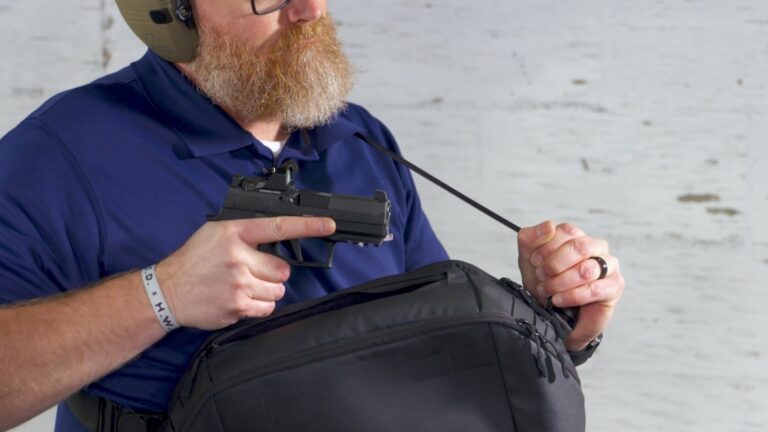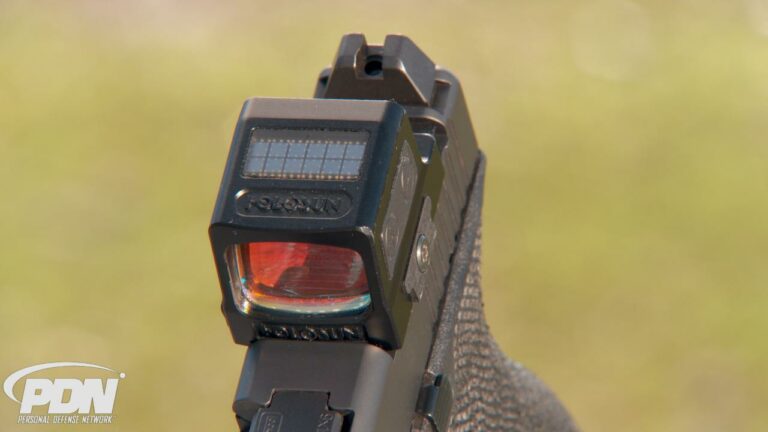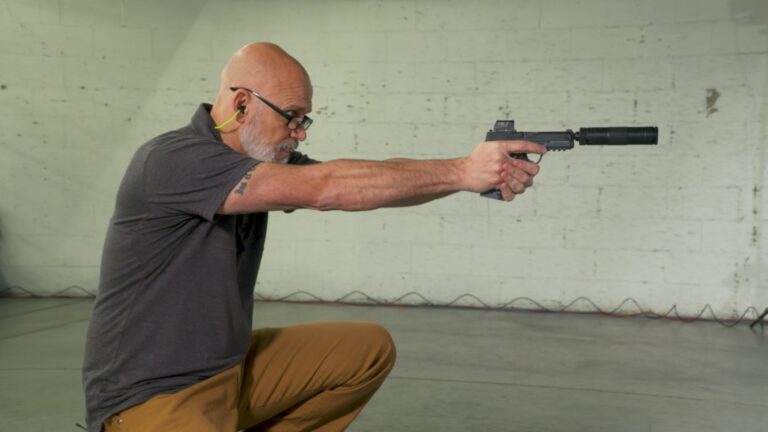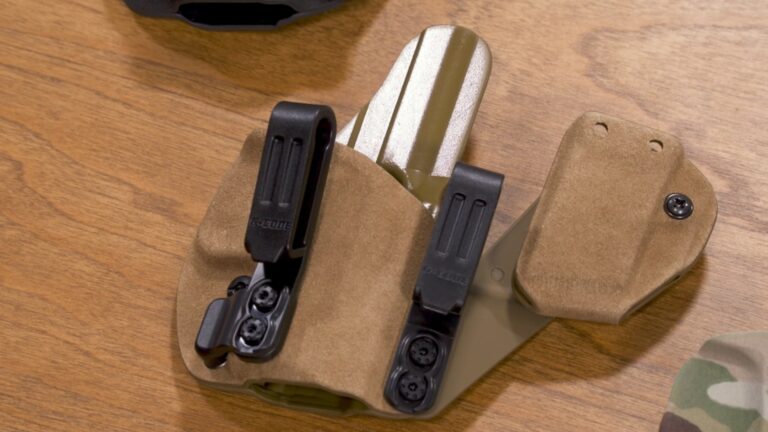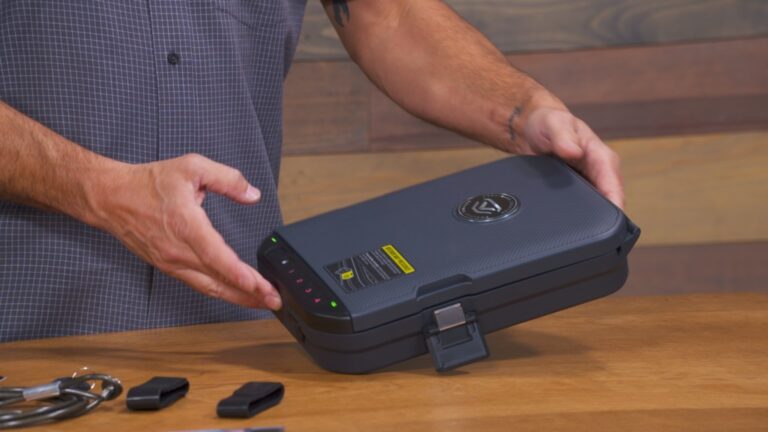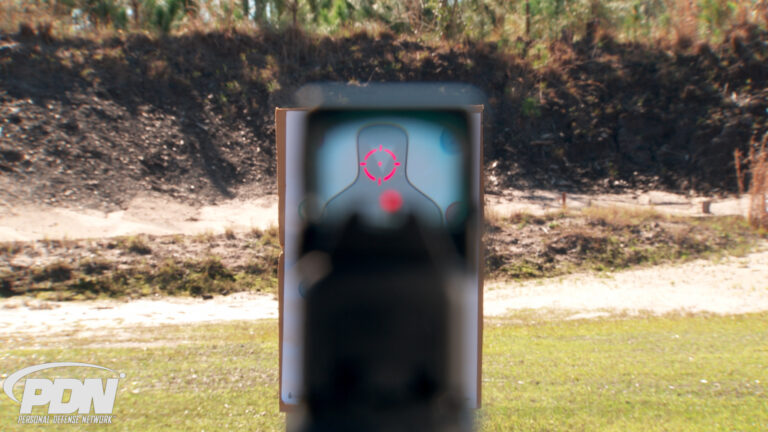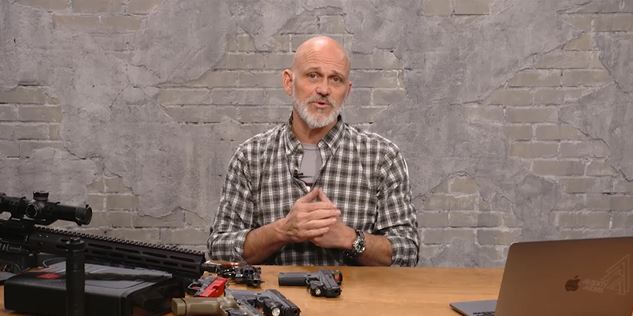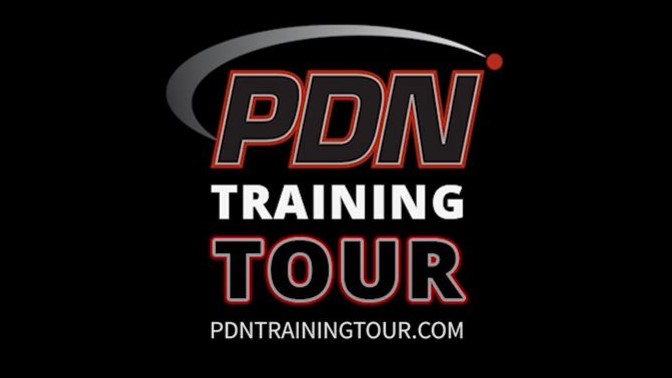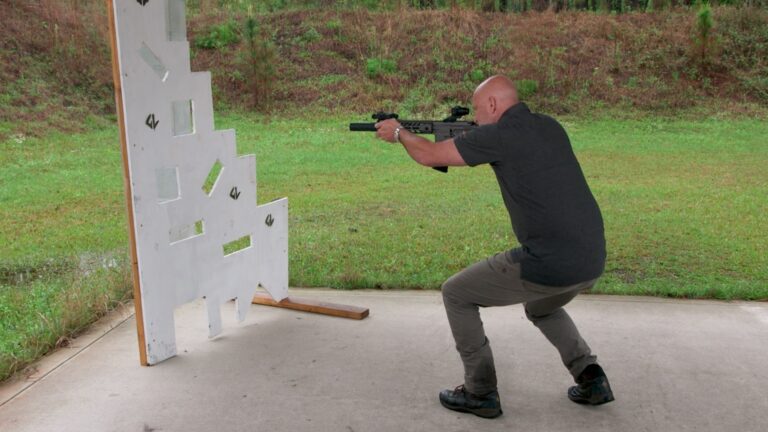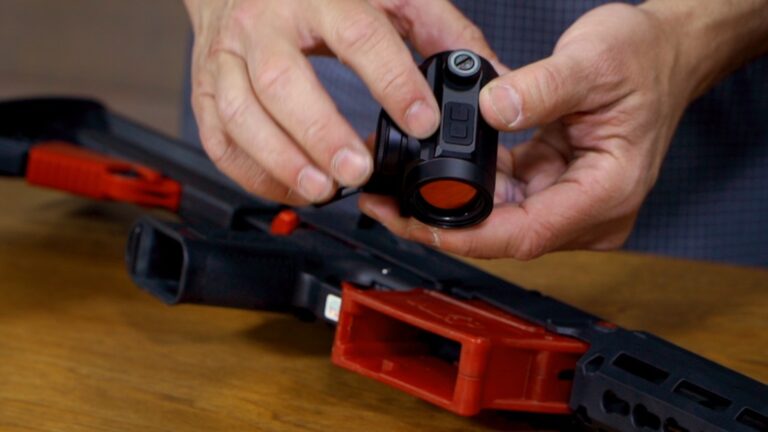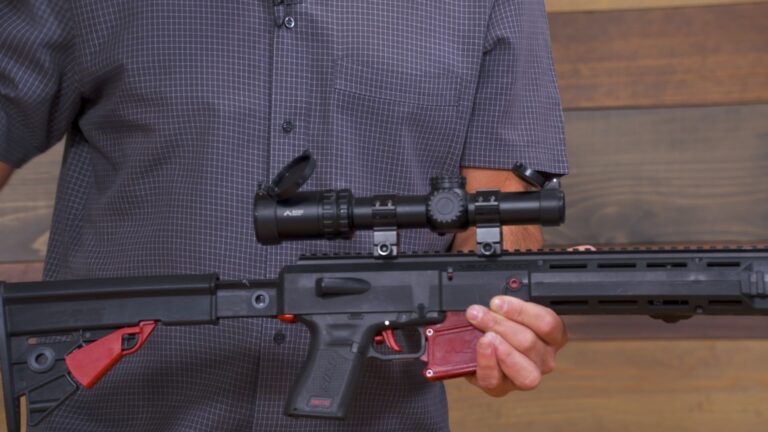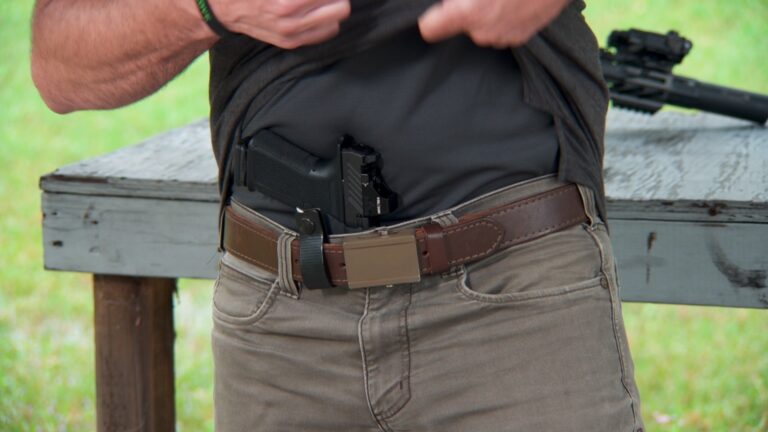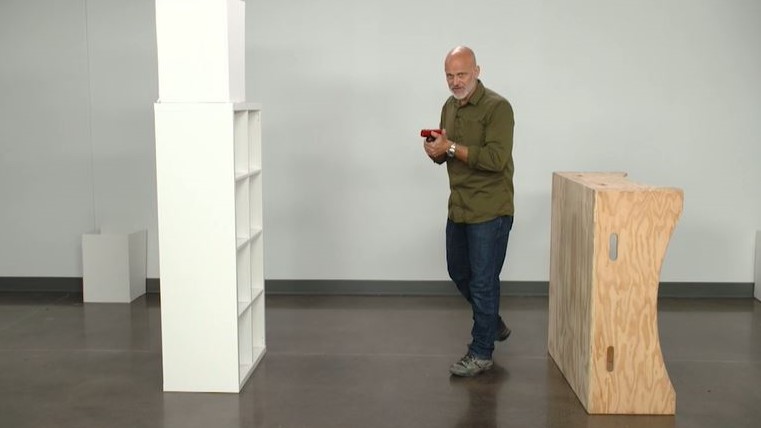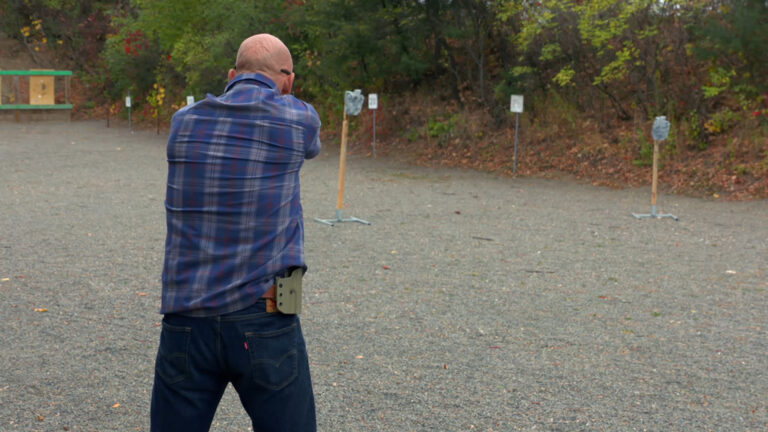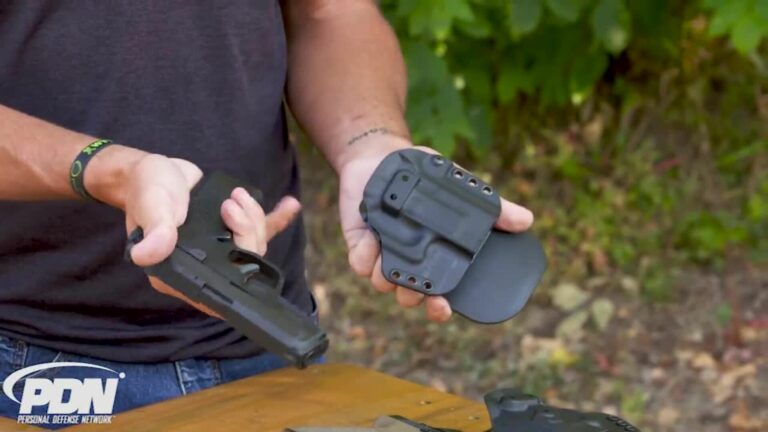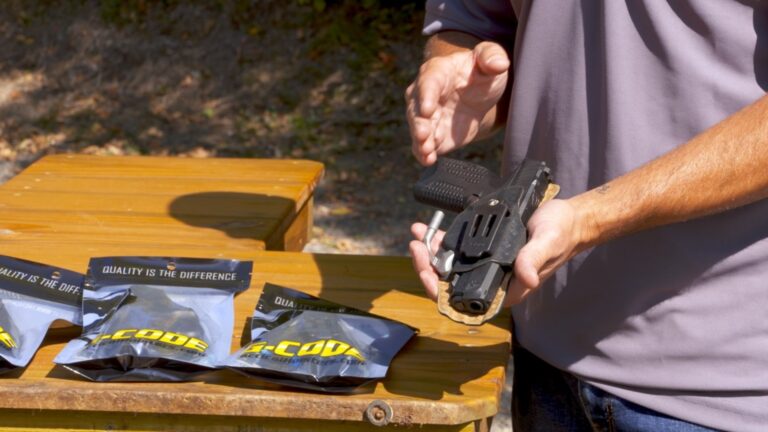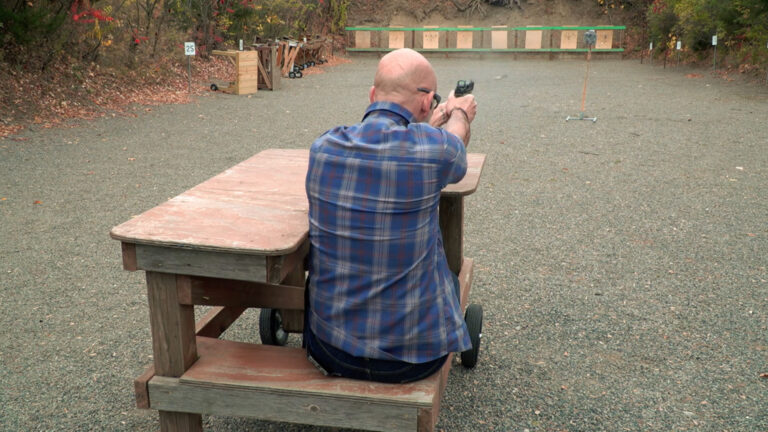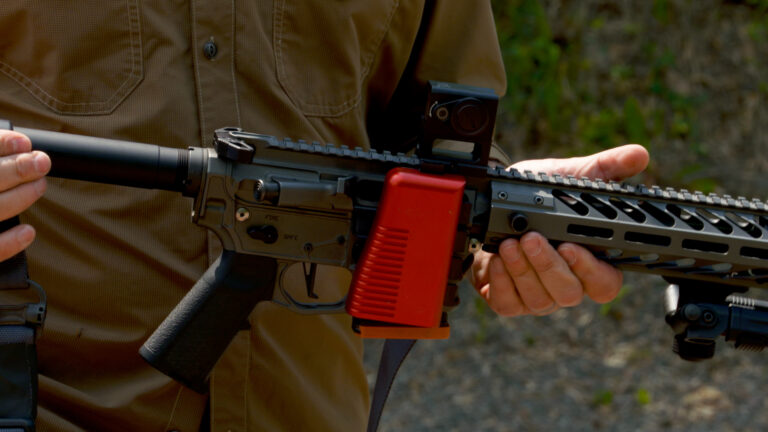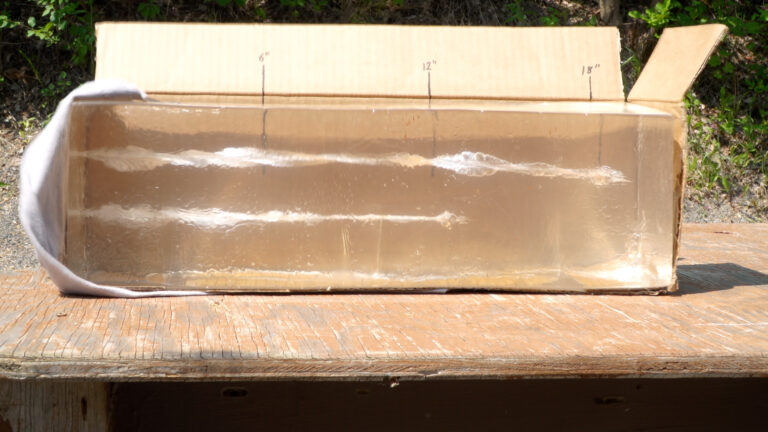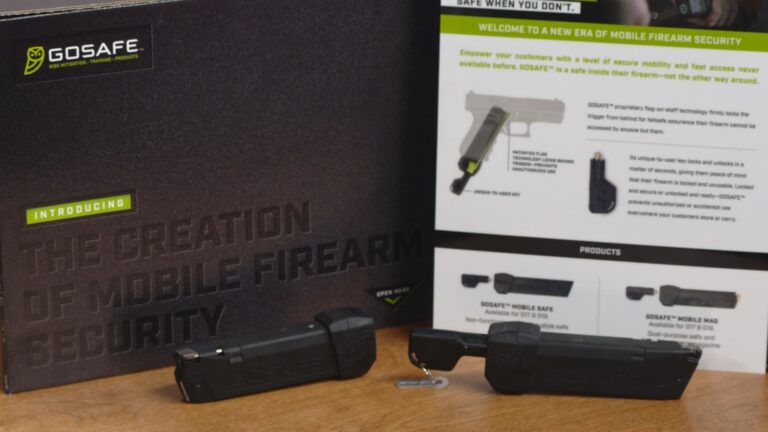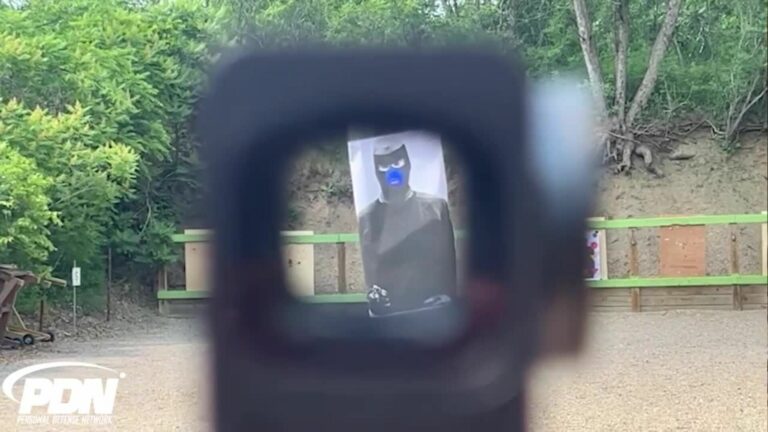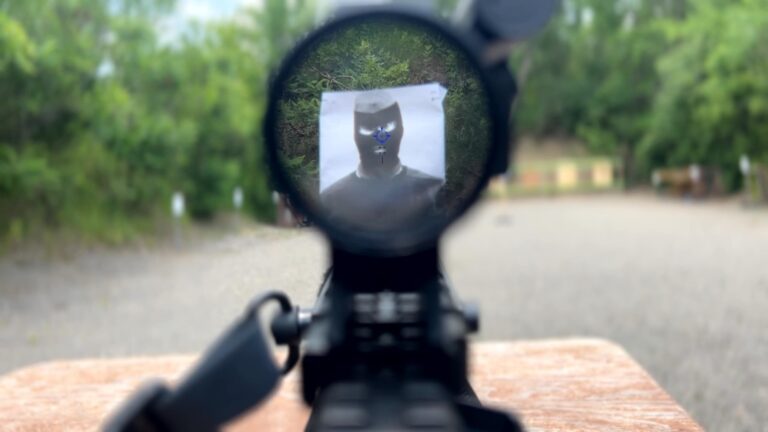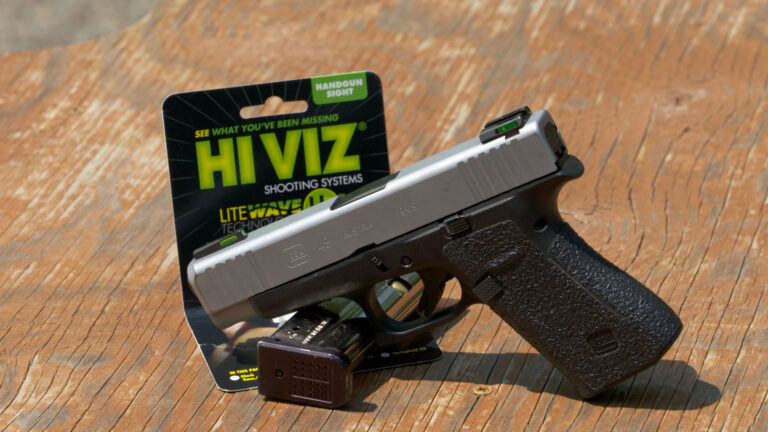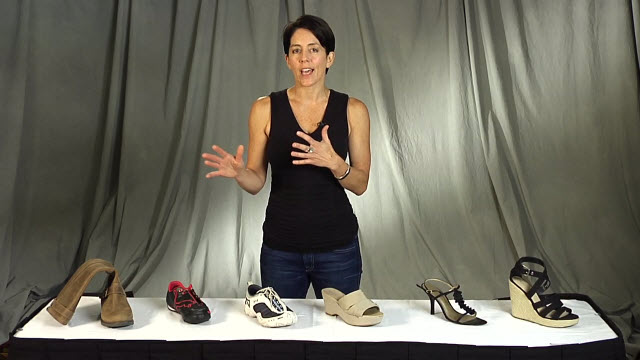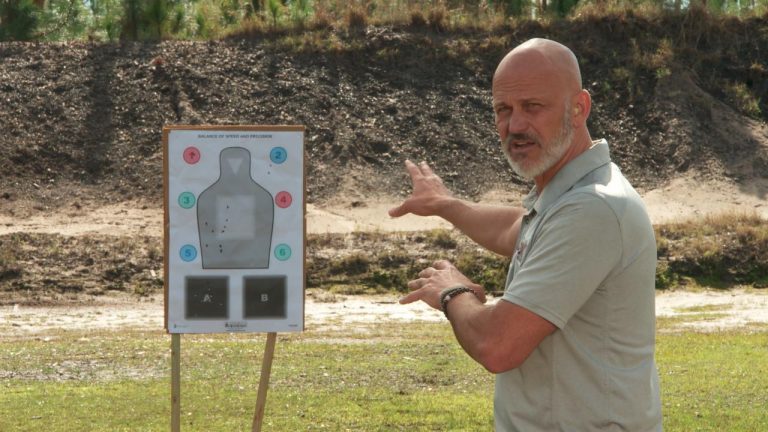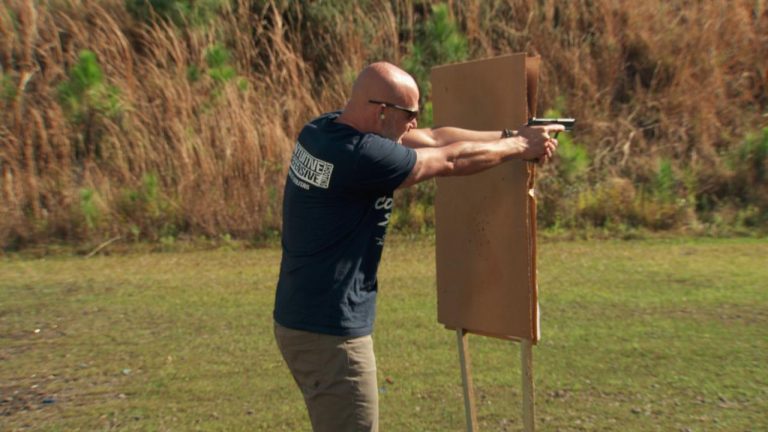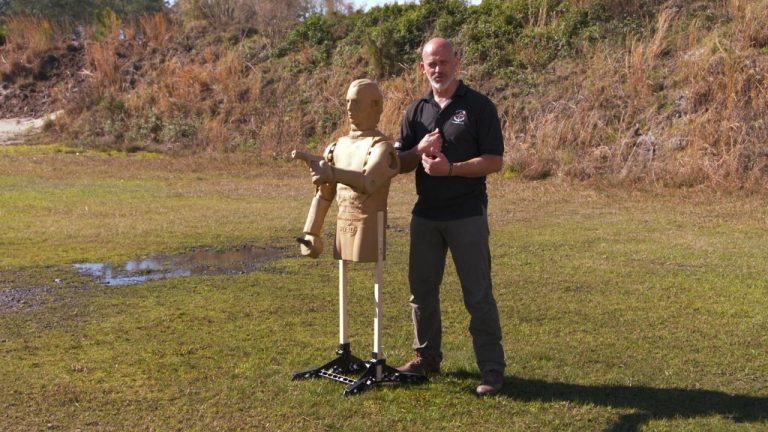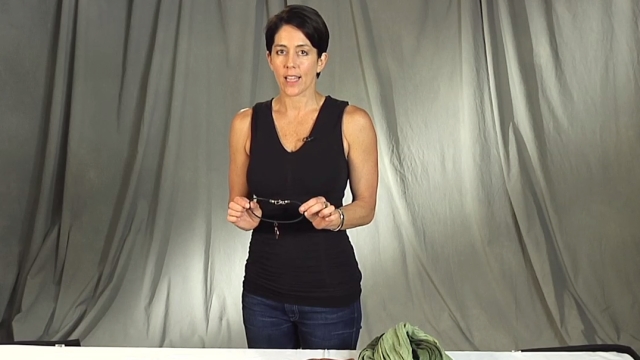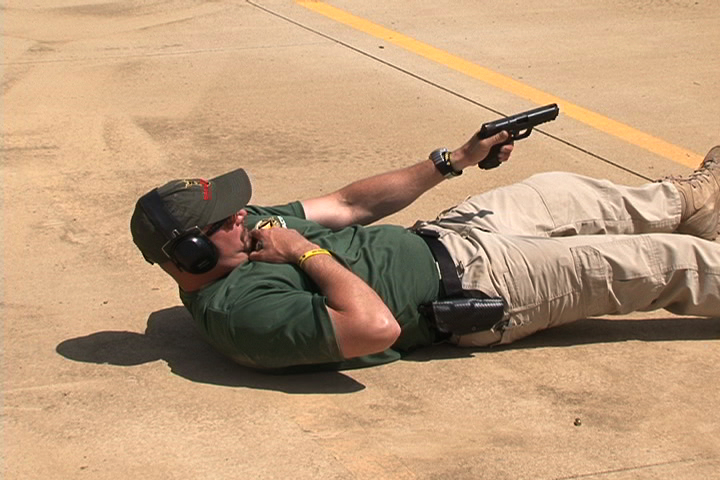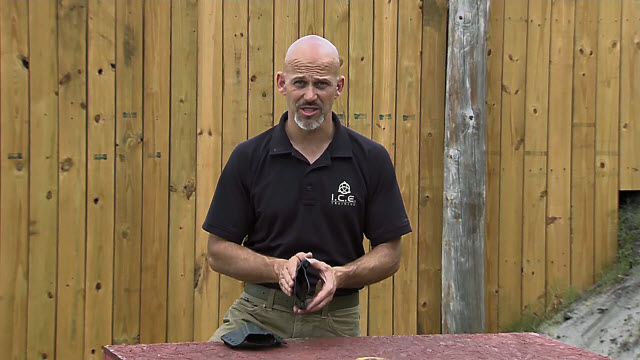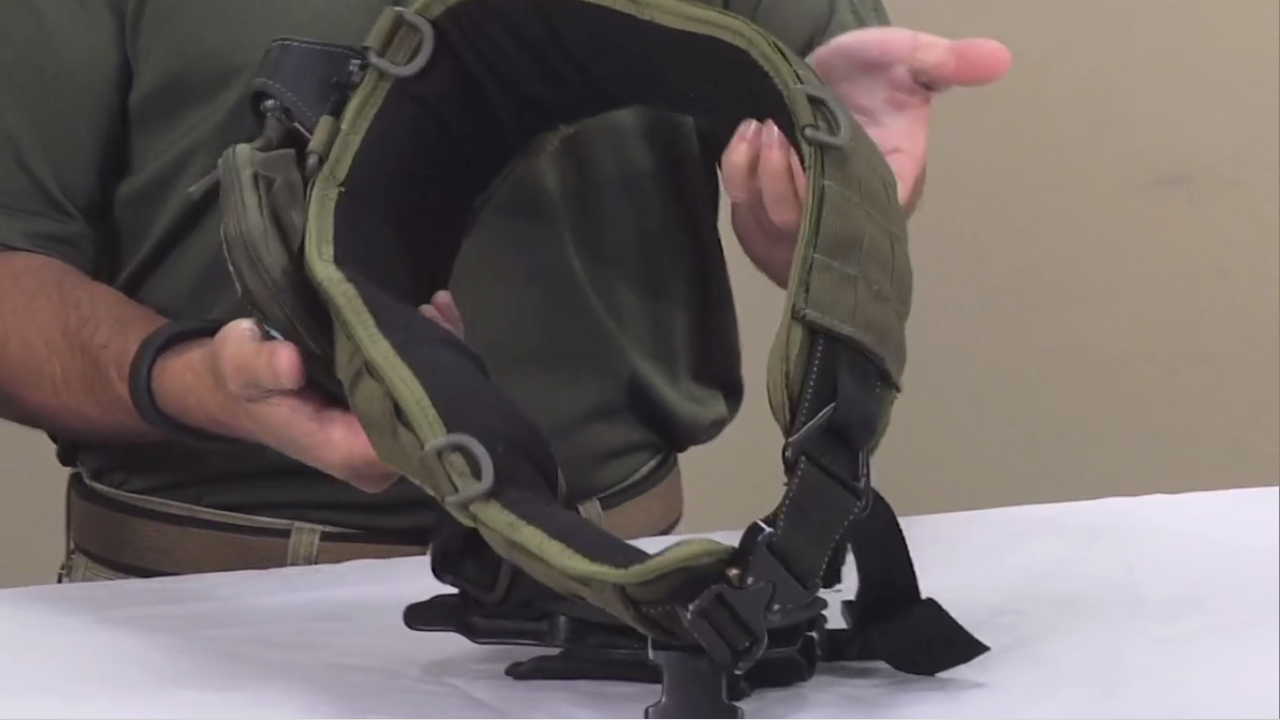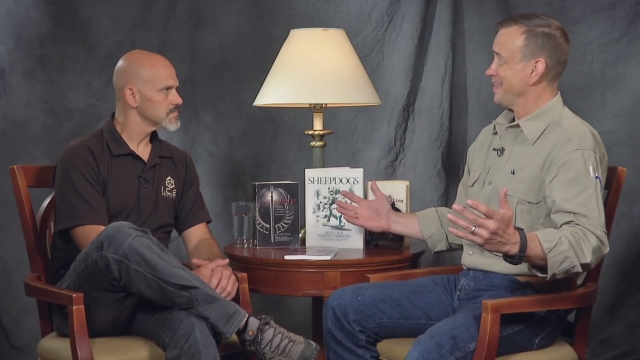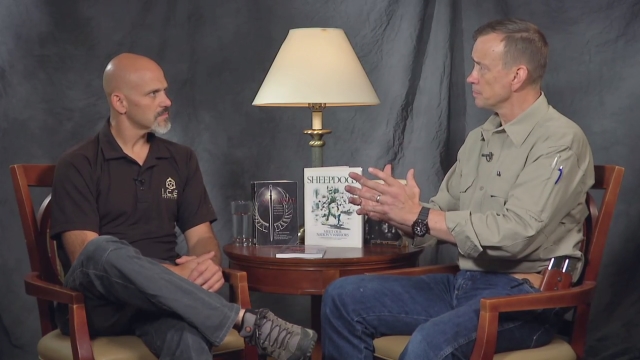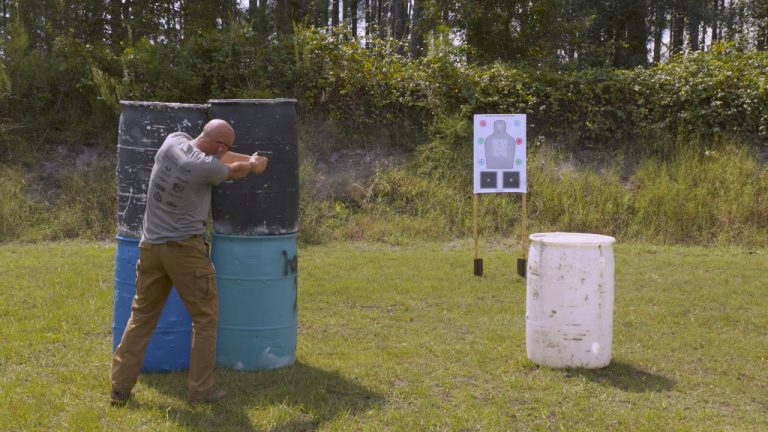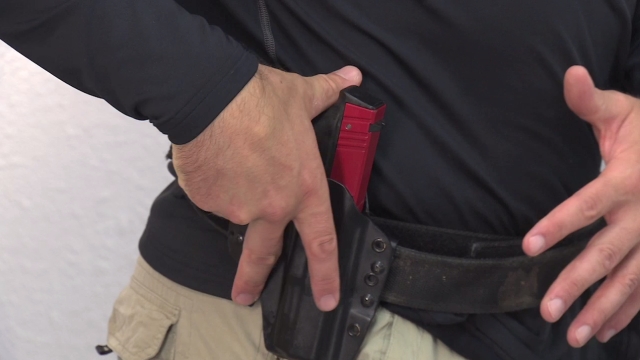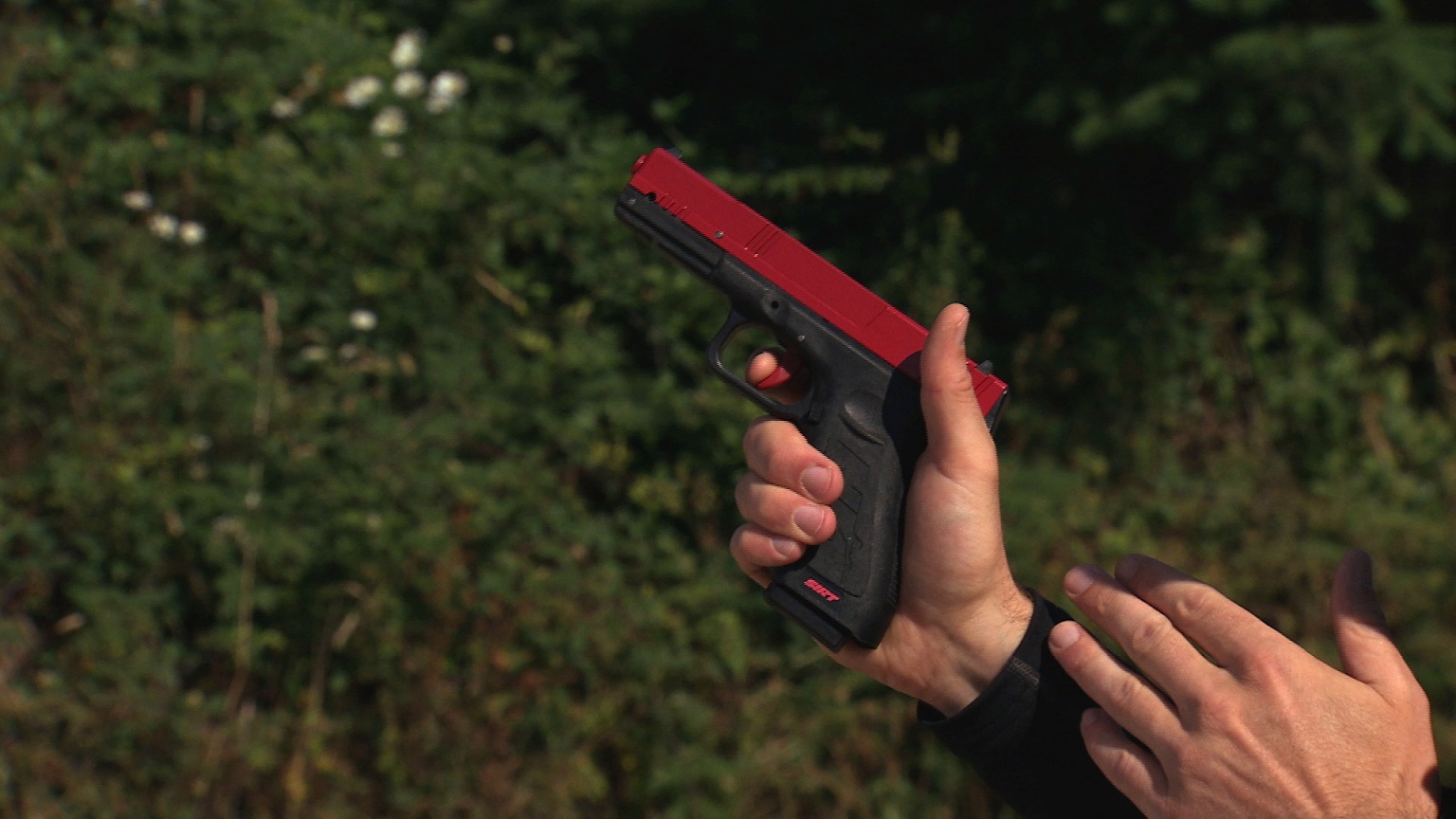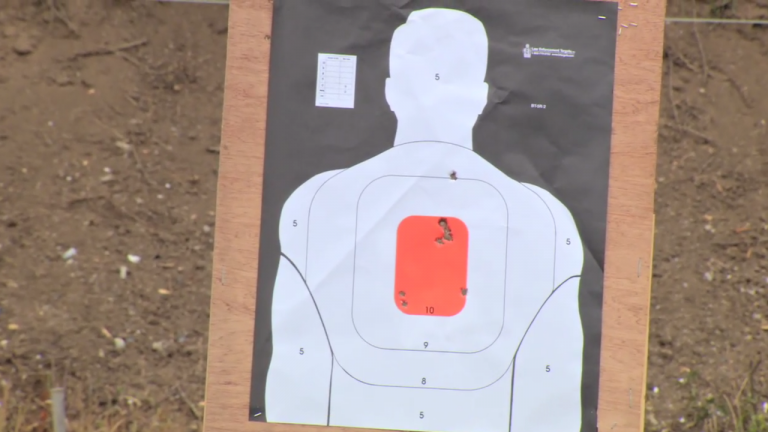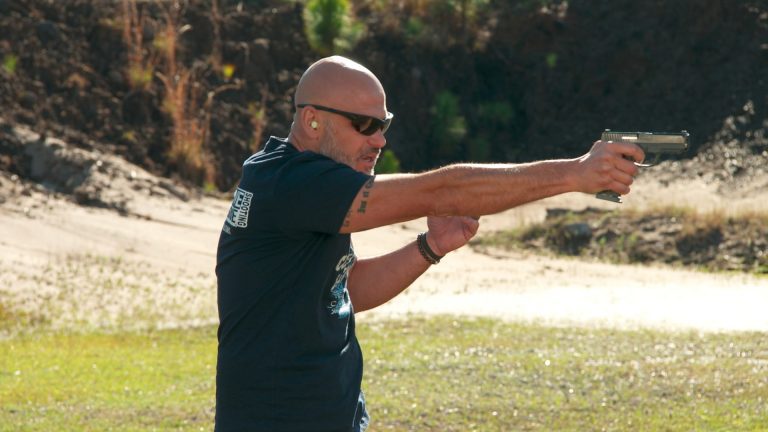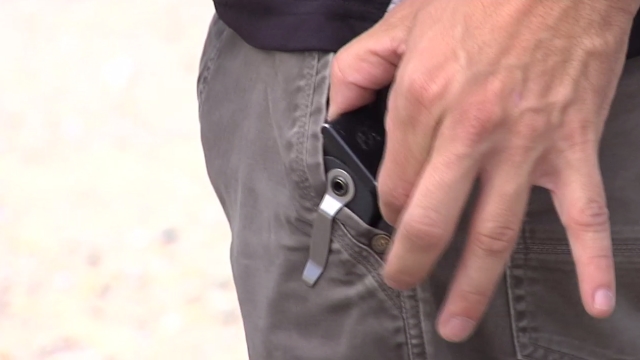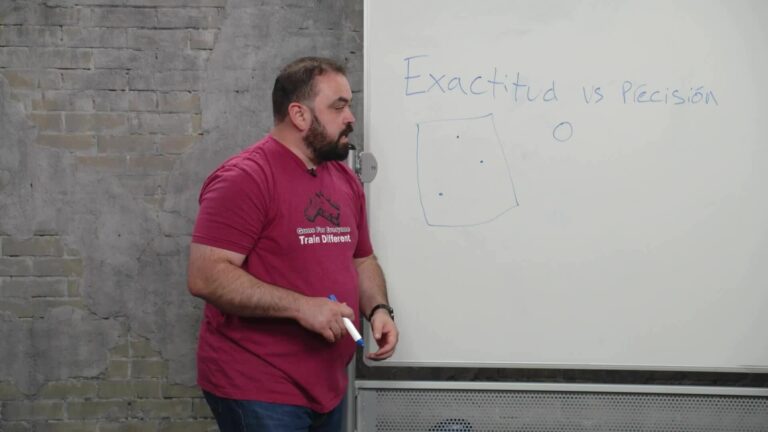
The 3 Ds of Lateral Movement
Rob PincusLateral movement is moving off line from the line of attack to the threat or the target we’re using to simulate the threat. The reason we do lateral movement is to get used to moving while we’re doing our gun handling. As Rob Pincus says, if the gun or some part of the gun is moving, such as the magazine or the slide, and you are not actually shooting at the target, you should be moving too.
WHY USE LATERAL MOVEMENT?
Why? Because moving off the line of attack makes it harder for the bad guy to hurt you. It’s a basic self-defense training technique. But to be clear, we’re not talking about dodging bullets. We’re talking about the fact that the human brain tracks motion predictively. If you can make the bad guy think you’re going to keep moving in a certain direction but then you suddenly stop, that throws off the tracking mechanism of someone who is focused on you and trying to hurt you.
This works whether the person is charging at you, shooting at you, throwing knives at you, or other kinds of attack. If they’re focused on you and you move, they’re going to look for you to keep moving. This is how the human brain works. Using an example from football, if you’re going to tackle someone, you don’t run to where they are; you run to where you think they’re going to be. The sudden stop throws the other person (the attacker) off.
WHEN YOU CAN/SHOULD USE LATERAL MOVEMENT
Incorporate movement into your handgun training and practice when you are performing any of these actions:
— on a malfunction response
— reloading the gun
— drawing from the holster
— extending from the ready position
WHAT ABOUT THE 3 Ds?
The 3 Ds are:
Distance: You should move laterally at least one body width. Any lesser distance and the attacker will not be invested in your movement.
Direction: off line from the line of attack aka perpendicular to the line of attack.
Duration: How long should you move? The duration depends entirely on what you are doing. For example, if you’re extending from the ready position, the time is very short. But if you’re coming from a concealed carry position, the duration is longer and you’ll get a few steps in.
Explore videos by Rob Pincus
You may be interested in
Premium Membership
Unlock exclusive member content from our industry experts.
- 24/7 Access to Premium Personal Defense and Firearm Training Videos and Drills
- Step-by-Step Instructional Demos and Guides
- 50% Off Video Downloads Purchased in the Personal Defense Network Shop
- Access to Ask the Expert Program
Unlock exclusive member content from our industry experts.
- 24/7 Access to Premium Personal Defense and Firearm Training Videos and Drills
- Step-by-Step Instructional Demos and Guides
- 2 Full-Length Video Downloads to Watch Offline
- 50% Off Video Downloads Purchased in the Personal Defense Network Shop
- Access to Ask the Expert Program
Gold Membership
$340 Value
Get everything included in Premium plus exclusive Gold Membership benefits.
- 24/7 Access to Premium Personal Defense and Firearm Training Videos and Drills
- Step-by-Step Instructional Demos and Guides
- 9 Full-Length Video Downloads to Watch Offline
- 2 Full-Length Personal Defense Classes to Keep for Life
- 2 In-Depth Skill Development Presentations
- Discounts on Purchase-to-Own Content in the Personal Defense Network Shop
- Access to Ask the Expert Program
- Exclusive GOLD LIVE Streaming Events
